Frameless sofas: features, types and choices
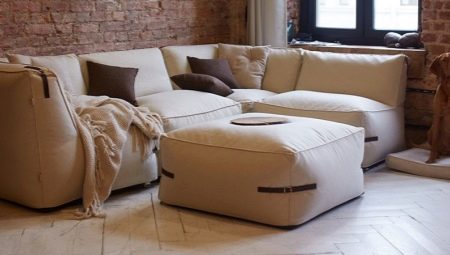
No interior is complete without beautiful and functional furniture. However, if earlier the priority was mainly frame products, today manufacturers produce a range of frameless products with polymer fillers. The material in this article will tell you about its features, pros and cons, types, as well as the nuances of choice.

Peculiarities
Frameless sofas are furniture of various shapes, which depends on the type of filler used. They have a padded inner cover and outer padding. The top cover is usually removable and is made of a durable material that is resistant to dirt and abrasion. There are no rigid parts and bases inside, the type of filler used is resistant to moisture and temperature changes.
Due to its characteristics, the model is used in different rooms of the dwelling. At the same time, the service life and weight load may differ from product to product. One of the distinctive features of this furniture is the ability to independently replace the filler.
Sofas without a frame are popular with both adults and children, their key function is user comfort.
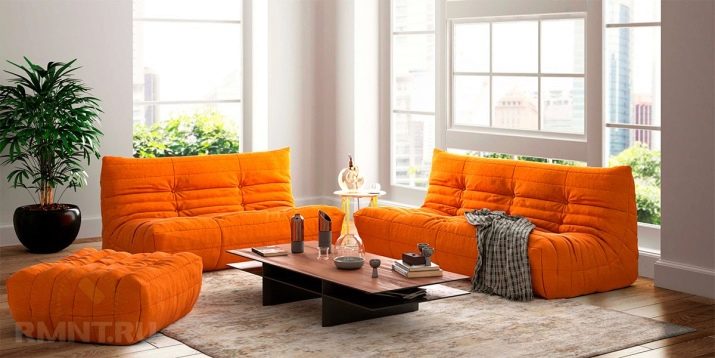
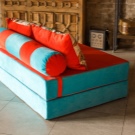
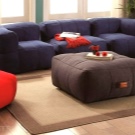

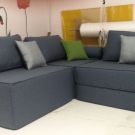
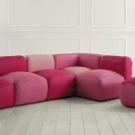
Advantages and disadvantages
Frameless sofas have many advantages.
- They are lightweight and mobile. Due to their low weight, they can be moved to any room in the home. You can change the location as often as you like.
- They are safe: they have no sharp corners to hurt if accidentally touched.
- They are environmentally friendly. Harmless materials are used in production, so the products are suitable even for allergy sufferers.
- Furniture without a frame is very practical, hygienic, maintainable. Its covers and fillers can be changed. If desired, the upholstery can be made by yourself.
- These sofas are durable. They serve no less than traditional counterparts on the frame.
- They are suitable for arranging different rooms. in various styles of the interior, becoming its key accents.
- They are aesthetically pleasing. Such furniture can be an independent accent and part of a furniture ensemble.
- Frameless sofas are affordable. Their price is less than traditional counterparts on the frame.
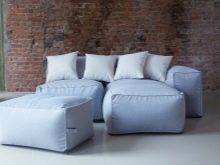
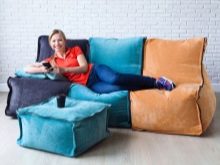
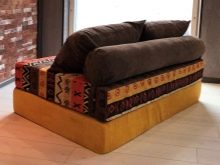
In addition, the frameless sofas are distinguished by the widest range of colors. Depending on their shape and size, they are suitable for children, adolescents and adults. Unlike frame furniture, they quickly take the shape of the body, reducing the stress on the spine. Due to the lack of rigid parts, they cannot be broken. At the same time, the products are suitable for people with different complexions.
Along with the advantages, frameless sofas have several disadvantages. They do not have storage boxes for any supplies. They are not at all capable of replacing frame, let alone orthopedic furniture. The back support of these products is insufficient. Due to the low rigidity in the absence of conventional sofas or armchairs, back pain is inevitable over time.
These products have a low fit. Anyone can use it, but it is difficult for older people to get up from such furniture. Despite the comfort of sensations, these products cannot be used for daily sleep.

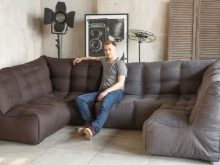
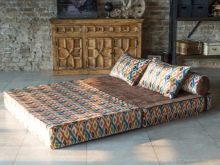
Over time, the loss of volume is inevitable, depending on the type of packing, you have to add or completely change the filler.
Varieties
Frameless sofas can be classified according to several criteria. For example, according to the type of execution, they are straight, angular and modular... All 3 types can be filled in the form of mats or blocks of elastic padding of natural or synthetic origin. Such furniture can be modular, consisting of one or more sections.
The models of sectional, composite and radius types have their own differences. The sectional ones are attached to each other during the assembly process. Composite have a free fastening system. These blocks can be selected in any quantity, making from them sofas of the desired length. Radials consist of one piece. Such furniture is used to accentuate the central part of the room.
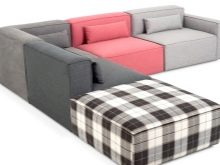
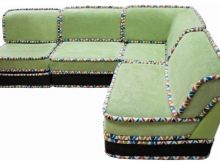
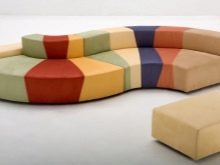
Besides, among the lines there are models with granular filler... They are not rigid and can be used as sofas or large pillows for relaxation. They have a small padded back and sometimes armrests. Some models are notable for the fact that they can be rotated as desired, using either side for sitting or lying down.


Sofa pouf
This version of frameless furniture differs from traditional frameless poufs in large sizes. Unlike other modifications, such furniture consists of one piece with a different cut shape. Most models of this type have no backrest. They resemble bean bags that take the shape of a body under the weight of a person sitting down.
Other options are tailored in such a way that at the back they have small side-backs. The individual products are reminiscent of long reclining chairs designed for one user. Others can fit two people of average build.
By the type of execution, they can be ordinary and transformable.

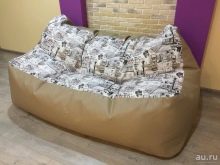
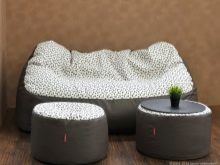
Convertible sofa
This group includes modifications of two types with a berth: folding poufs and modular-type options. Products of the first group consist of two filled mats, packed in inner and outer cases. In addition, they are equipped with rollers and pillows. When needed, these sofas can be folded into comfortable and compact poufs.
Products of the second type are assembled from several elements. In fact, these are sofas consisting of ready-made and packaged component parts. This furniture can have separate armrests, bases, separate and backrests combined with the seat.
At the same time, individual options are equipped with their own foot poufs.
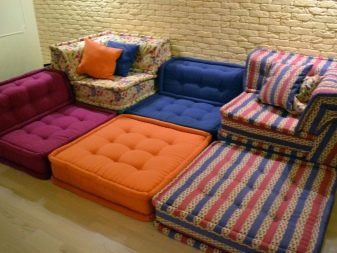

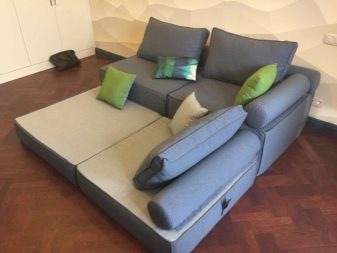
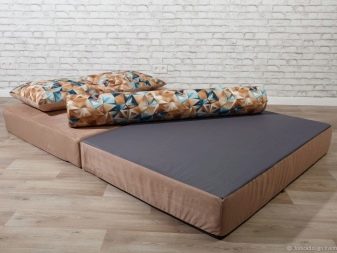
Cushion sofa
This group includes two types of soft products: huge rectangular pillows with granular filling and puffs, consisting of solid blocks of sheet stuffing. Products of the first type include modifications of various shapes. They can resemble chairs in the shape of a drop, pear, ball, banana. As a rule, the dimensions of such furniture are small, these sofas do not have a berth, they are designed for a sitting position of the user.
Analogs in the form of large pillows of oval or rectangular sheet filler can have different heights. Some of the products are equipped with comfortable toppers. Options with an ottoman are also noteworthy. In addition, some modifications have small pillows.
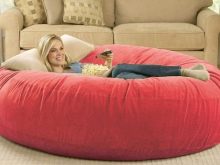
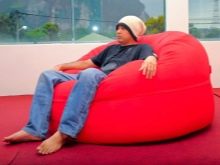
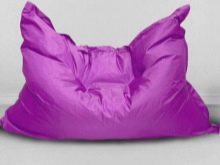
Upper and filler materials
Different raw materials are used in the production of frameless sofas. The upholstery materials are dense and breathable. Most often, they use materials such as velor, jacquard, chenille, tapestry, flock, suede. Less often, frameless sofas are made of imitation leather. The inner covers are made of elastic cotton-based textiles.
Such furniture is stuffed with different materials. This factor determines the lifespan of a particular sofa. Some options are filled with granular polystyrene foam. It is 90% air, so it is light enough.
However, when purchasing such furniture, it is important to choose the correct size of the balls.



Their diameter should not exceed 4-5 mm. If they are smaller, the sofa will be heavier. The large size of the filler makes frameless furniture not so easy to use. When buying a model with such a filling, they usually take additional filler, because over time its volume will decrease, you will need to add balls.
Except balls, polymers are used in the production of frameless furniture... Budget products are made of foam rubber, but it is not able to keep its shape for a long time. Therefore, manufacturers also use expanded polyurethane foam. Elite products are created using latex and are very expensive.
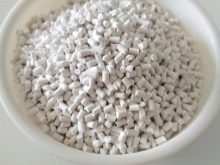
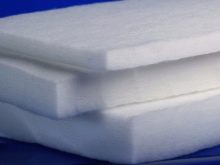
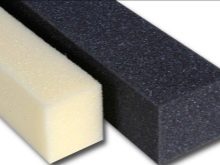
Dimensions (edit)
The parameters of sofas without a frame depend on their type. For example, puff models are the most compact... Options-pillows and poufs can be no more than 45 cm in height.Their length rarely reaches 1.5 m.The length of large models can reach up to 2 m at a height of 75 cm.
The parameters of medium modifications are approximately 180 cm in length at a meter height. Modular structures can be longer, like transformer products. As for the options-bags with granular filler, their parameters depend on the shape. On average, their back height ranges from 20 to 45 cm.
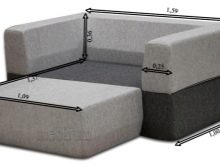
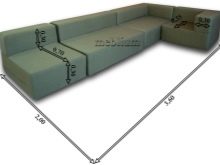
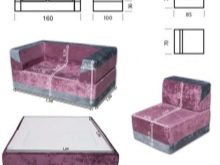
Colors
Color solutions for frameless sofas can be very diverse. A wide range of colors allows you to choose an option for an interior of any color. Among the current tones, one can distinguish gray, dark turquoise, smoky blue, sand, lavender, mustard. Light shades are also in fashion: blue, beige, creamy, pistachio. Despite the impracticality, white products are popular.
In addition to monochromatic options, there are products on sale with an interesting print. Drawings allow you to choose a product for arranging a specific interior style. For example, models with Indian ornaments, damask patterns, golden monograms, Scandinavian motifs look creative and bright.
Models for children can be made in colors with cartoon characters.

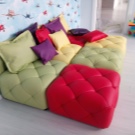
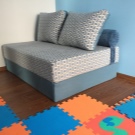

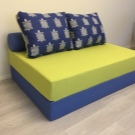
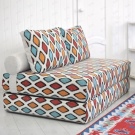
Selection Tips
Having decided to equip one of the rooms with a frameless sofa, there are several nuances to consider.
- The material of the upper cover should be dense, elastic, abrasion and cleaning resistant. The textile of the inner cover must be breathable and elastic. Textiles with a sparse weave of threads will not hold granular or solid filler.
- The practical model is equipped with a zipper that allows replacement of the padding.
- The length of the zipper should be at least 80-100 cm, the stroke is smooth, without jamming.
- The color of the upholstery should be practical, well suited to the specific style of the interior.
- The size of the product is selected based on their own needs. The type of construction is chosen based on the number of users.
- When purchasing products with ball filling, you can immediately purchase a bag of filling.
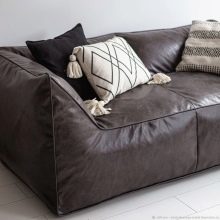
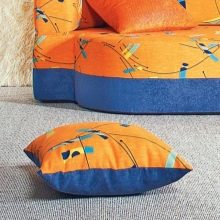
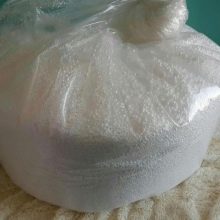
When choosing this or that model, they take into account its compatibility with the pieces of existing furniture. It is advisable to take into account the texture of the material, the shape and location of the approximate location. It is also important to consider practicality. For example, it is better to take bags or pillows to the nursery. Children will be happy to make playhouses, nest sofas or soft cocoons out of them.
Examples of use in the interior
We offer 10 examples of a successful choice of frameless chairs for furnishing the interior of city apartments or country houses.
- Arrangement of the guest area with a modular corner sofa.
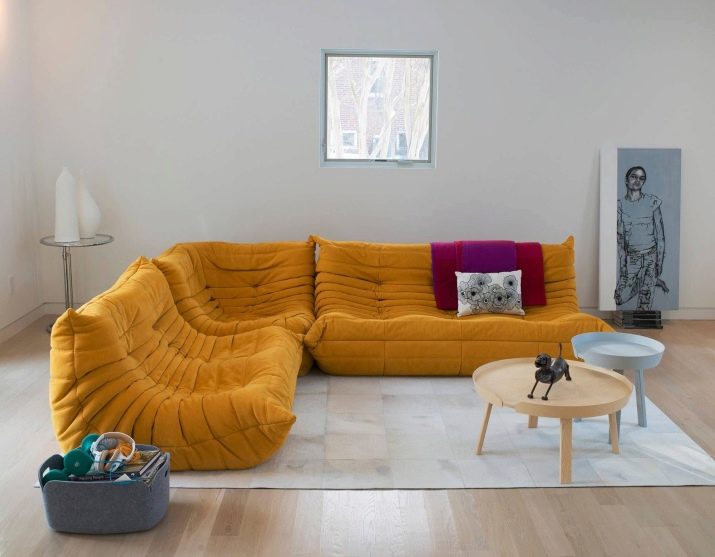
- An example of choosing frameless furniture for arranging an ethnic interior.

- The model is a round pillow that fits perfectly into the interior of the living room.
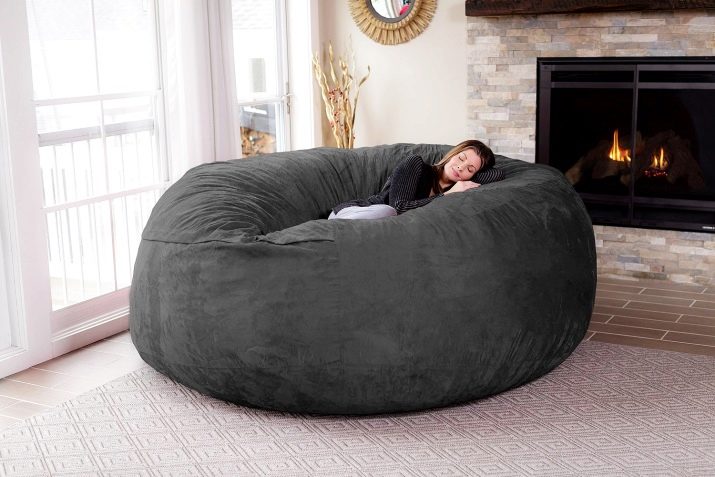
- Modular three-piece frameless sofa as a key element of the seating area.
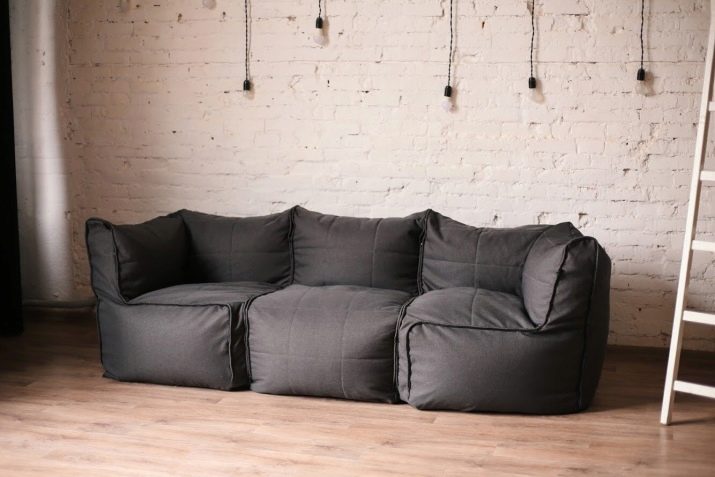
- Create a guest space with frameless furniture with decorative cushions.
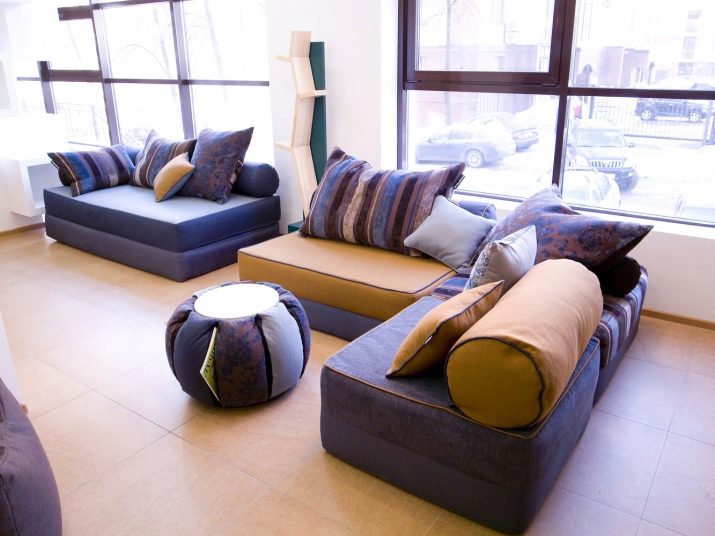
- Ethnic style modular sofa with cushions replacing the seats.

- Modular corner furniture with backrest.
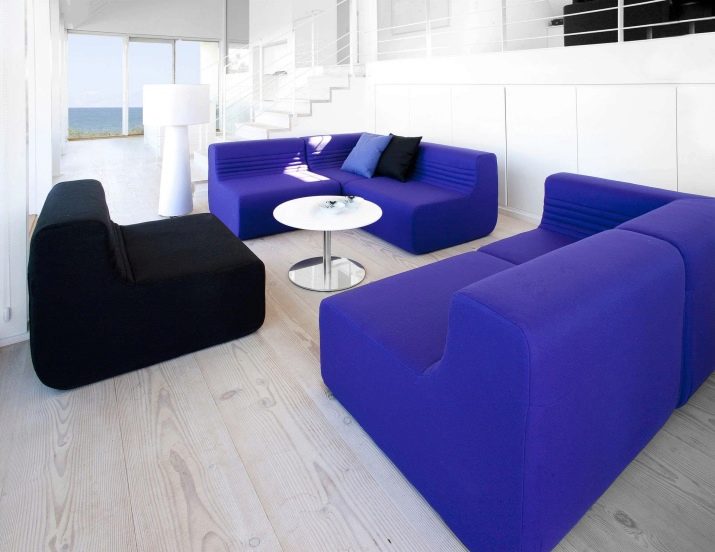
- A variant of an unusual shape, suitable for arranging a bedroom or a recreation area.
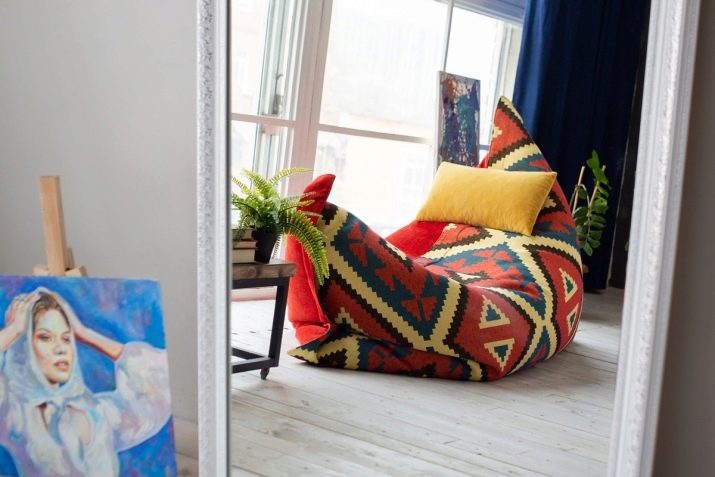
- A model of a laconic form that fits well into the interior of a child's room.
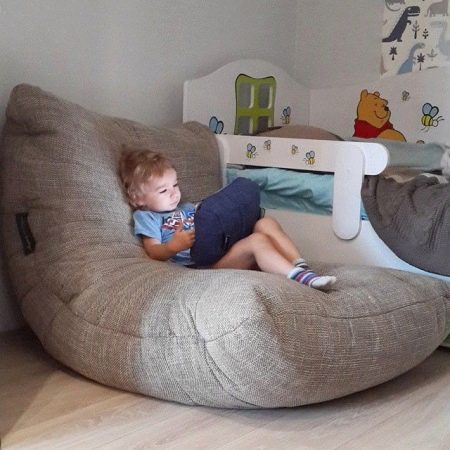
- A product with a backrest and armrests that can decorate the interior of a creative workshop.
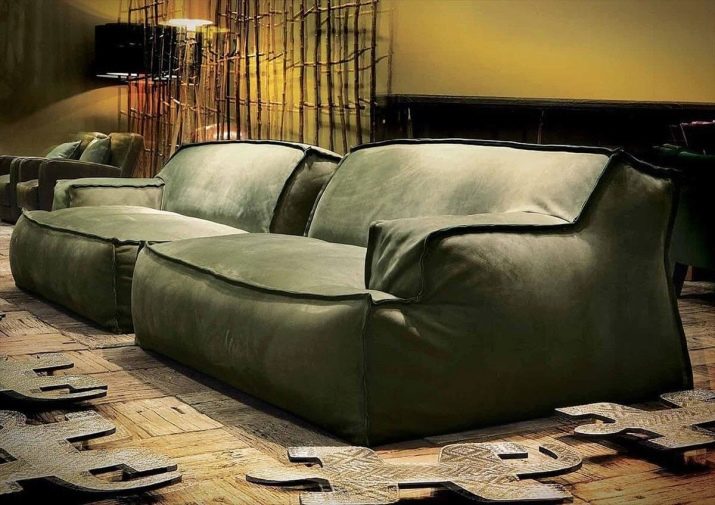
For an overview of a frameless sofa, see below.








